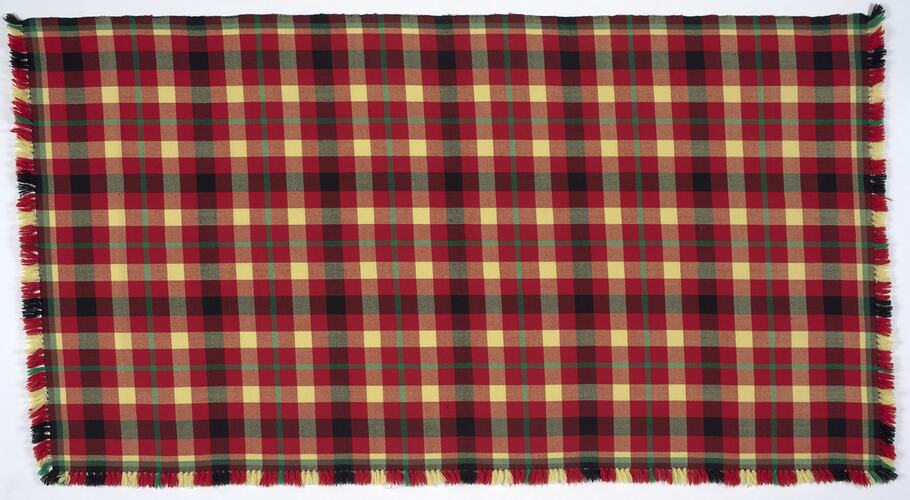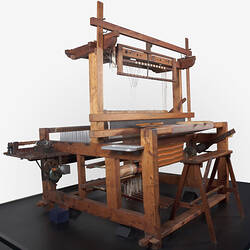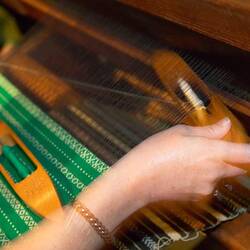Summary
Woven shawl with traditional Latvian patterns from the Alsunga Region. It was woven by Anna Apinis in Sydney in the 1960s. Anna was born in 1913 in Latvia. She attended weaving lessons in Liepaja in Latvia from 1930 to 1933 and spent hours at the nearby Liepaja Ethnographic Museum, recording traditional fabric designs in her notebooks. She had a loom constructed for her by fellow survivors of the World War II in at Memmingen a displaced persons camp in Germany.
In 1950 Anna migrated to Australia with her father Ernest, husband Ervins and son Eriks. She became one of the few suppliers of fabric for Latvian national costumes in Australia in the 1950s and 1960s, and exhibited her weaving nationally, at exhibitions and Latvian cultural festivals. She fulfilled her dream to keep her cultural traditions alive through her daughter Anita who continues to weave to this day.
Physical Description
Woven shawl in a chequered pattern with fringes on edges. Shawl is woven in red, yellow, black and green thread in criss crossing bands.
Significance
Significance: These items form part of the Apinis Latvian weaving collection, a collection of Latvian weavings, tools (including a countermarch floor loom), weaving notebooks, costume items and audio visual interviews. Its historical and cultural significance lies in the comprehensive documentation of the story through artefacts and narratives, the quality of the weavings and the rarity of particular items such as the loom created in a German displaced persons' camp after World War II and notebooks kept from the 1930s to preserve traditional Latvian weaving techniques. The collection documents the maintenance and transportation of cultural traditions.
More Information
-
Collection Names
-
Collecting Areas
-
Acquisition Information
Donation from Mrs Anita Apinis-Herman, Jun 2010
-
Maker
Mrs Anna Apinis, Sydney, New South Wales, Australia, circa 1960s
-
Other Association (See Comments)
-
Classification
-
Category
-
Discipline
-
Type of item
-
Exhibition Collection Management
1700 mm (Length), 765 mm (Width), 3 mm (Height)
Length = approx 1700
-
Keywords
Clothing Accessories, Cultural Identity, Handcrafts, Latvian Communities, Latvian Immigration, Traditional Costumes, Weaving, Woolwork, Refugees, Displaced Persons, Displaced Persons Camps


